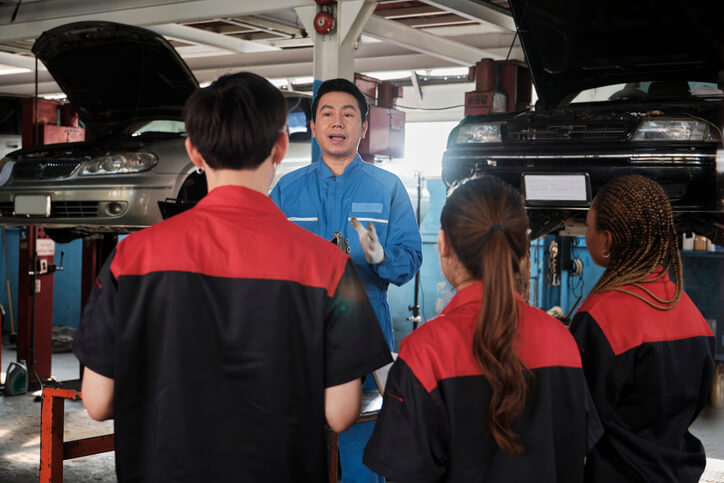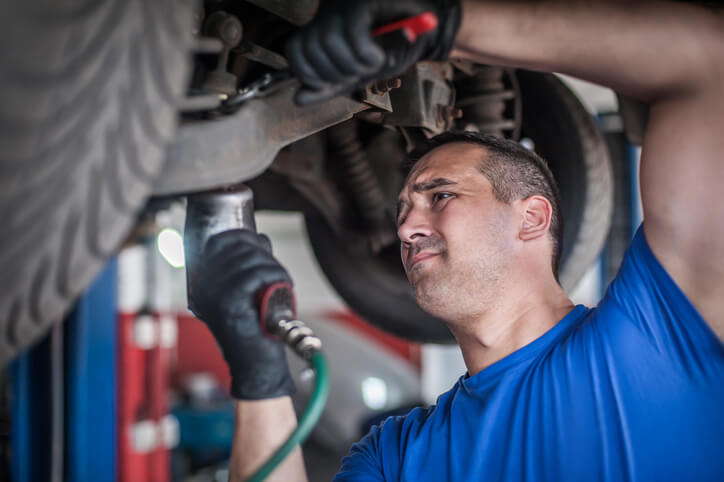Automotive School Insights: Why Alignment Isn’t Just About Tires Anymore
When people think of vehicle alignment, tires are often the first thing that comes to mind. But today’s vehicles are more complex than ever, and wheel alignment touches far more than just tire wear and steering angles. Alignment plays a crucial role in vehicle safety systems, digital diagnostics, and even energy efficiency. That’s why students at any reputable automotive school need to understand alignment as a system-wide concern, not just a basic maintenance procedure.
Let’s dive into how the concept of alignment has evolved and why it’s such an essential focus of modern automotive training programs like the one at ATC Montreal.
Alignment and Advanced Driver Assistance Systems (ADAS)
Modern vehicles come equipped with a variety of Advanced Driver Assistance Systems, or ADAS, such as lane-keeping assist, adaptive cruise control, and automatic emergency braking. These systems rely on sensors that must be accurately calibrated. If a vehicle’s alignment is off, even slightly, those sensors may no longer function correctly.
At our auto mechanic school, students learn how alignment interacts with onboard systems like steering angle sensors, radar units, and cameras. This ensures future technicians can diagnose and correct issues without compromising a vehicle’s safety features.

Beyond Steering: Alignment Affects Ride Quality and Efficiency
Improper alignment doesn’t just cause uneven tire wear; it can also lead to reduced fuel economy, increased suspension strain, and general driver discomfort. A well-aligned vehicle reduces resistance and helps suspension components function efficiently. In hybrid or electric vehicles, where energy efficiency is paramount, alignment is even more critical.
This expanded understanding of alignment is now a vital component of automotive training, ensuring technicians are equipped to service a wide range of vehicles, from traditional sedans to high-tech EVs.
The Tools and Technology Behind Modern Alignment
Gone are the days of relying solely on manual gauges and toe plates. Today’s shops use laser-guided alignment racks and computerized systems that connect directly with a car’s onboard diagnostics. These systems can even detect slight anomalies that a traditional mechanic might miss.
By enrolling in a comprehensive automotive school program, students gain hands-on experience with these state-of-the-art technologies. This kind of exposure ensures they’re ready to hit the ground running in real-world environments, offering accurate diagnostics and reliable repairs.
Alignment in Collision Repairs and Custom Builds
If a vehicle has been involved in a collision, chances are the alignment has been affected, sometimes even if the impact seems minor. Similarly, when performing custom modifications such as lowering a car or adding larger wheels, alignment must be rechecked and recalibrated to maintain safe operation.
Auto mechanic school students at ATC Montreal learn how alignment interacts with body panels, suspension geometry, and frame integrity. This broad perspective helps them better diagnose structural issues and adapt solutions based on customer needs.

Why Choose Our Automotive School?
Whether you’re new to the trade or looking to upgrade your skills, ATC Montreal offers a robust automotive training program that reflects the evolving realities of the modern auto industry. From mastering alignment systems to working with diagnostic technology, students graduate prepared to tackle complex challenges in today’s repair shops.
If you’re interested in a rewarding, future-focused career, explore what a high-quality automotive school like ATC Montreal has to offer. Because in today’s world, alignment is just the beginning.
No one understands the value of advanced alignment knowledge better than ATC graduate Dean Woloshen. “I had a great experience at ATC,” he shares. “The instructors were very experienced and excited to be passing on their knowledge to others. What I learned at ATC helped me open up my own shop, where I now have students doing their practicum. Having the ATC course under your belt really gives you an edge. Anyone interested in the automotive or auto body industry should sign up with ATC.”
Dean’s success story is a testament to the hands-on, cutting-edge training students receive, particularly in key areas like alignment.
Are you looking for comprehensive automotive training?
Contact ATC Montreal for more information.


